Sheena Cranwell
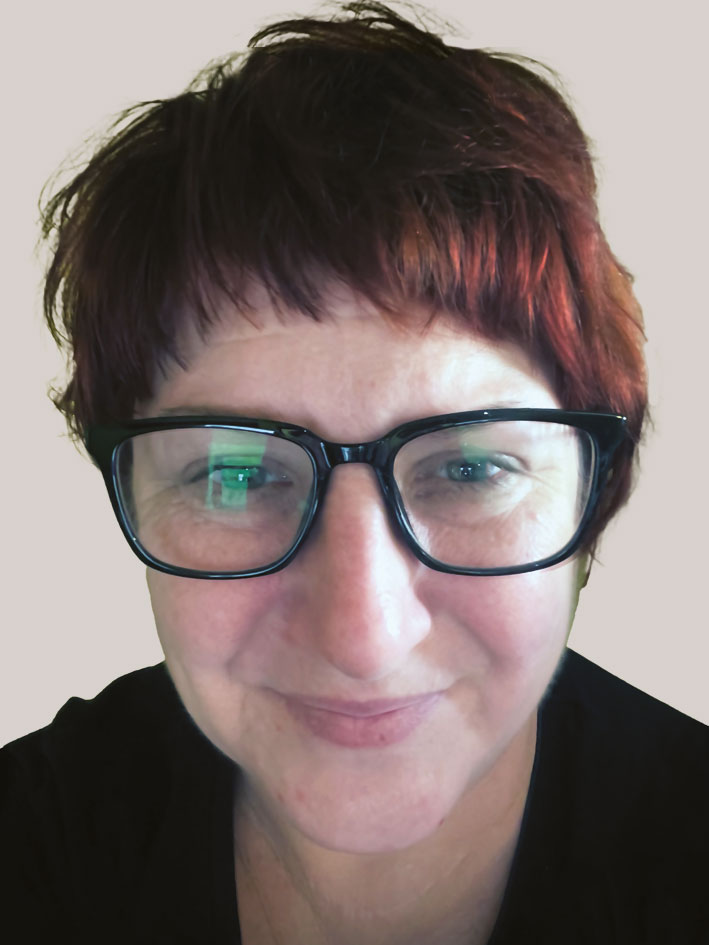 Project title: Vicarious Trauma Strategies: Protecting the Professional Wellbeing of Art Therapists working with Trauma.
Project title: Vicarious Trauma Strategies: Protecting the Professional Wellbeing of Art Therapists working with Trauma.
Born in Brisbane in the 70s, a love of art, creativity and colour has influenced my use and exploration of varying expressive mediums in both my personal life and professional practice as a social worker. Having witnessed an increase in need for mental health support in the greater community, I set the goal of completing the Masters of Mental Health, Art Therapy with the University of Queensland to enhance my understanding of mental health presentations and gain skills in the provision of Art Therapy, as a therapeutic intervention. The alignment of my personal passion for art and my professional drive to improve therapeutic outcomes for my clients is the underlying energy of my artmaking process.
My research project, aimed at uncovering the different strategies art therapists may be using to protect against developing vicarious trauma, is one that holds great importance to me, as a student embarking into a therapeutic practice with clients impacted by possible trauma. Recognising the importance of general self-care for therapists, leads to my goal of identifying ways to preserve my own professional psychological wellbeing, uncovering helpful self-care tips for other art therapy students and the profession in general.
The aim of my artmaking for the exhibition was to capture my emotional, academic journey, as I investigate the topic of vicarious trauma strategies and the structured process required for a thesis project. My reflective art making is usually spontaneous, without specific directives, helping to capture the true essence of my emotions, with black ink being my preferred medium. However, as one who thrives on problem solving, curiosity and learning new skills, I often choose the use of alternative mediums, such as paint, textiles, and colour to enhance my interest and engagement in my creations. The purposefulness of my artmaking providing an experiential platform for myself, while capturing a creative depiction of a thesis journey on vicarious trauma strategies, through a Masters of Mental Health Art Therapy student’s lens.
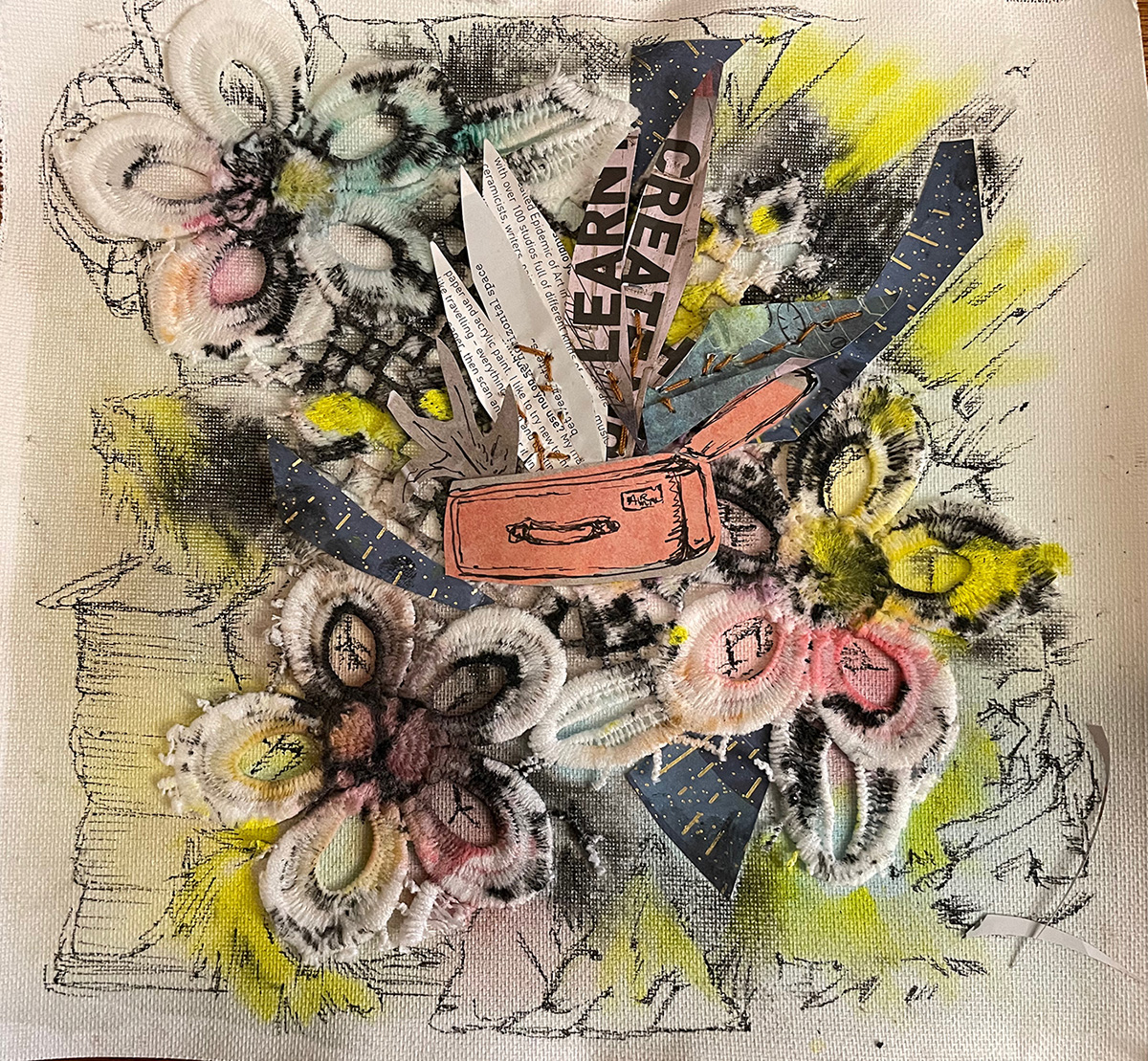
Multimedia collage – use of watercolour, black ink, fabric, and paper on canvas board.
29cm x 29cm
Creativity and enthusiasm can be a curse, when one wants to construct a research project that contains clarity, purpose, and scientific application. One needs to tame the excitement within.
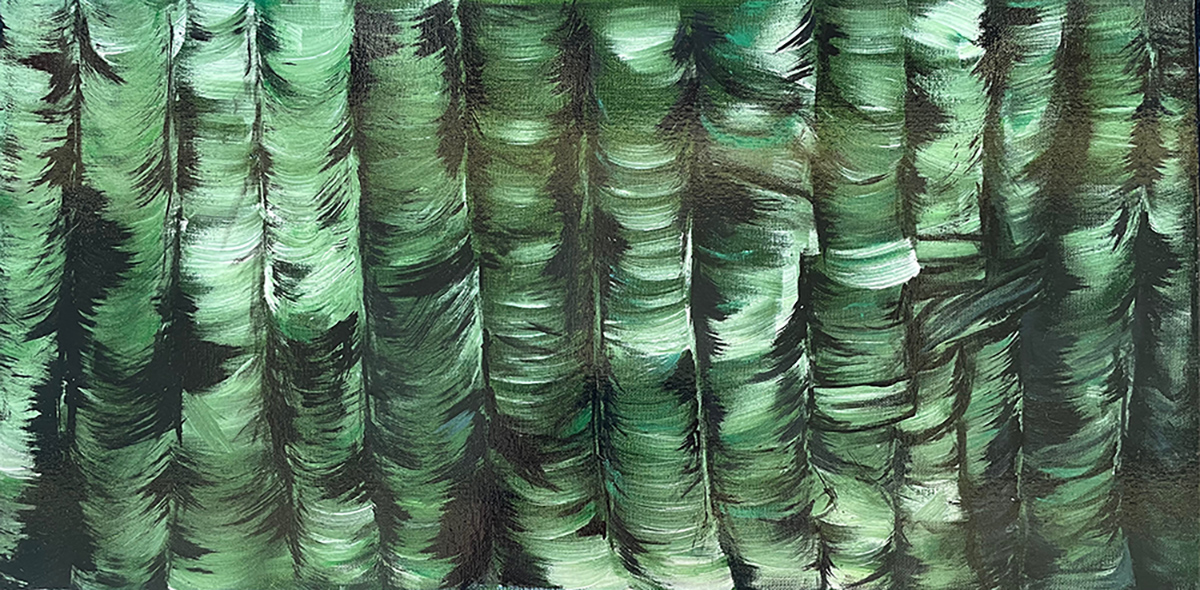
Acrylic paint and gloss on canvas
61cm x 30cm
At the start of the research journey, it felt as though I was walking through uncharted territory as I set out to discover the self-care strategies art therapists may be using in practice to prevent vicarious trauma.
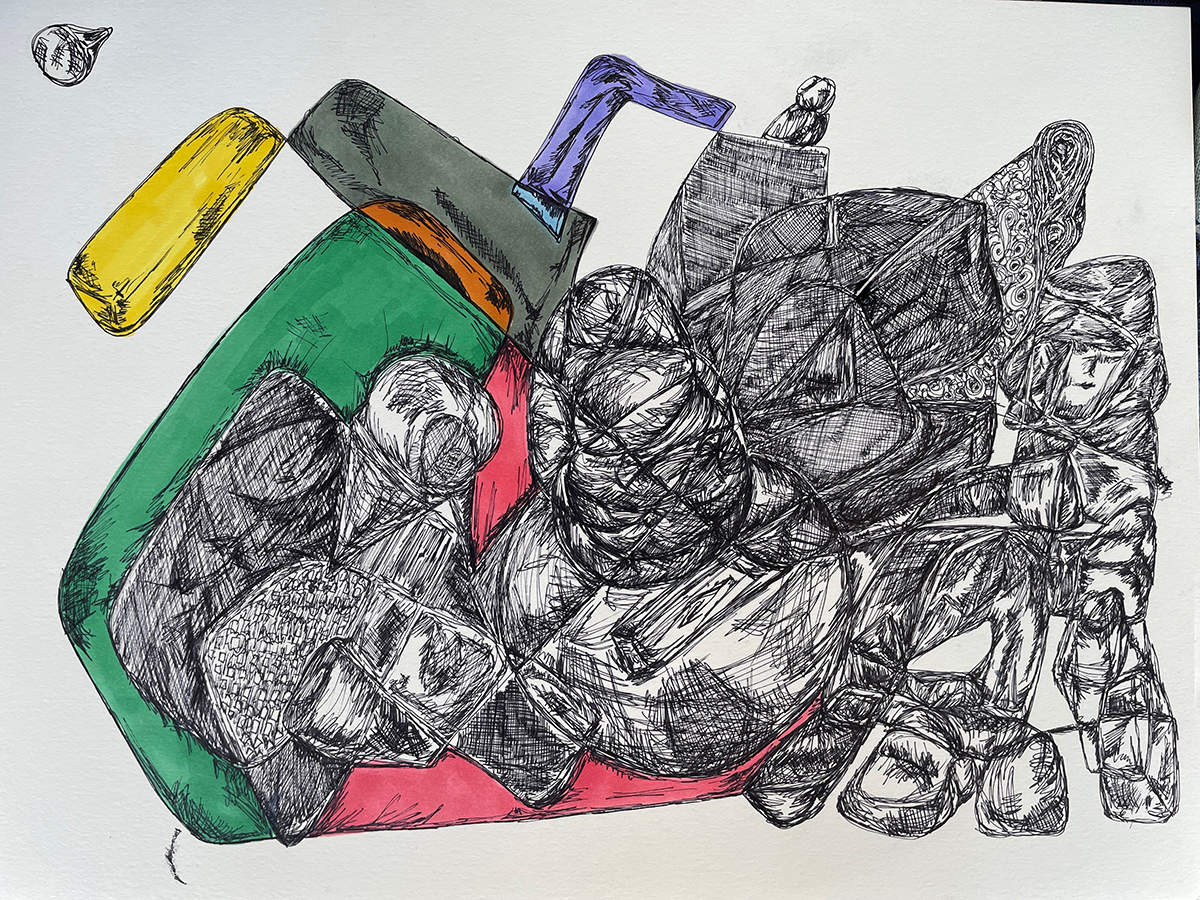
Black ink and alcohol felt tip.
29.7cm x 42cm
At the beginning, the task of completing a thesis can feel like an uphill battle. It is determination and perseverance that can help you to push through the many stages of research.
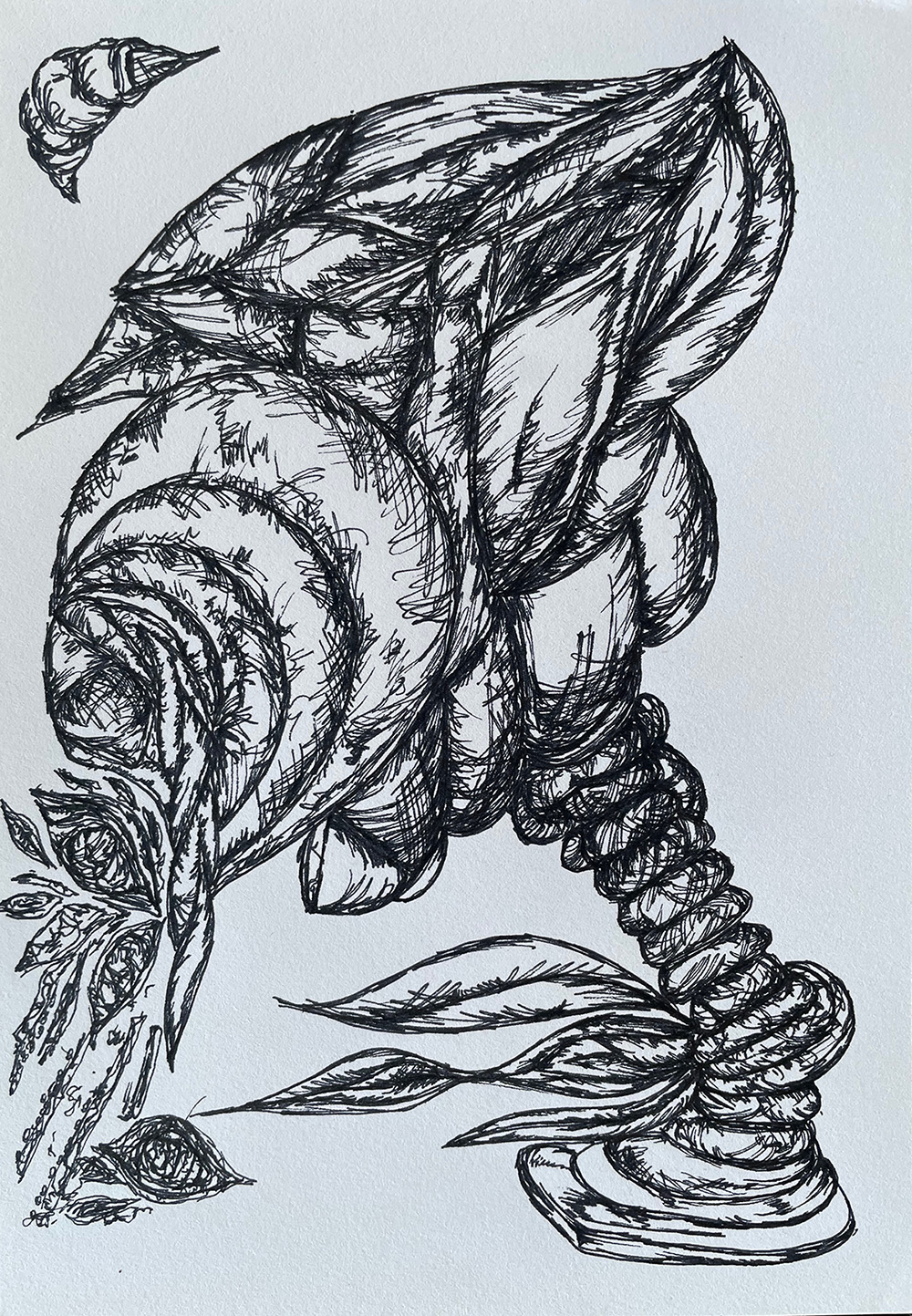
Black ink on textured sketch paper.
14.8cm x 21cm
This sketch was created in celebration of gaining some clarity on using a student lens to explore the existing preventative vicarious trauma strategies art therapists may be using in practice when working with clients impacted by trauma.
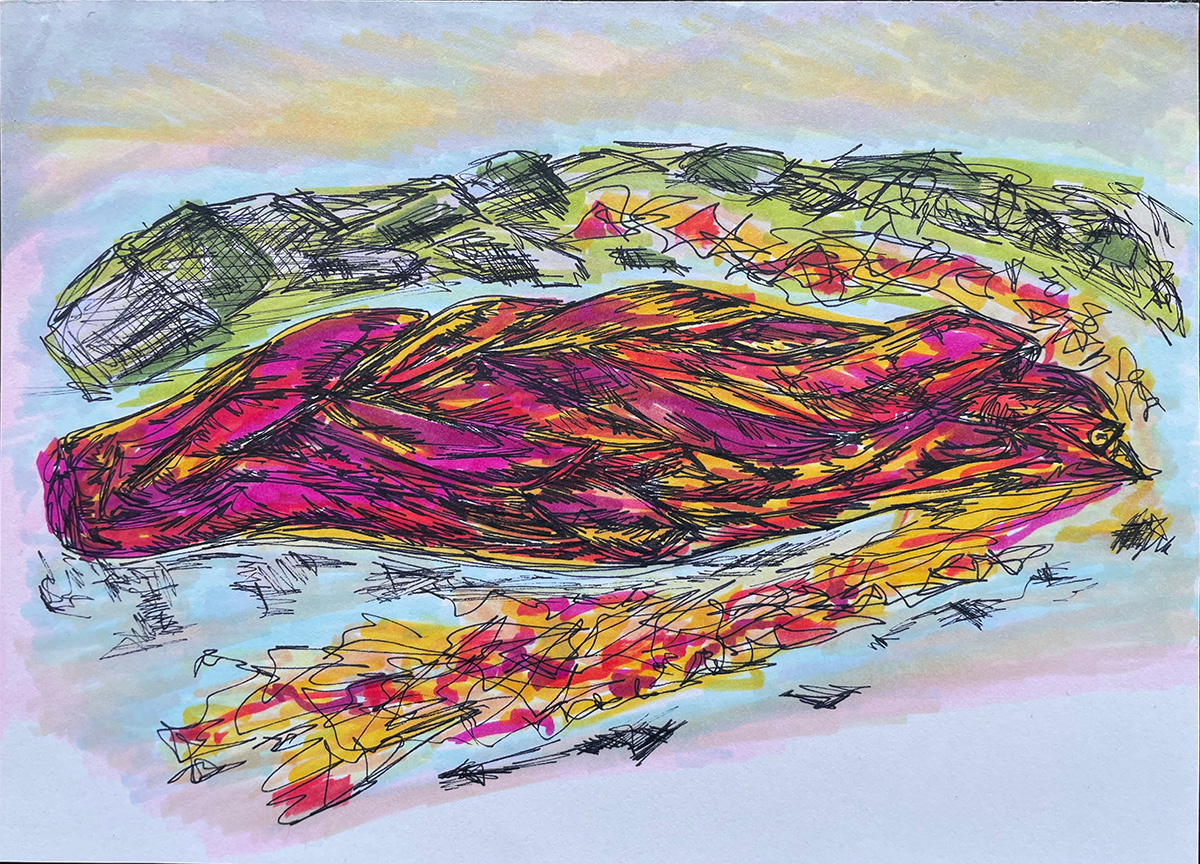
Black ink and alcohol felt tip
20.5cm x 15cm
Hidden within the research purpose of uncovering the preventive strategies art therapists may use, to safeguard against developing vicarious trauma, is the wish to develop safety within the profession.
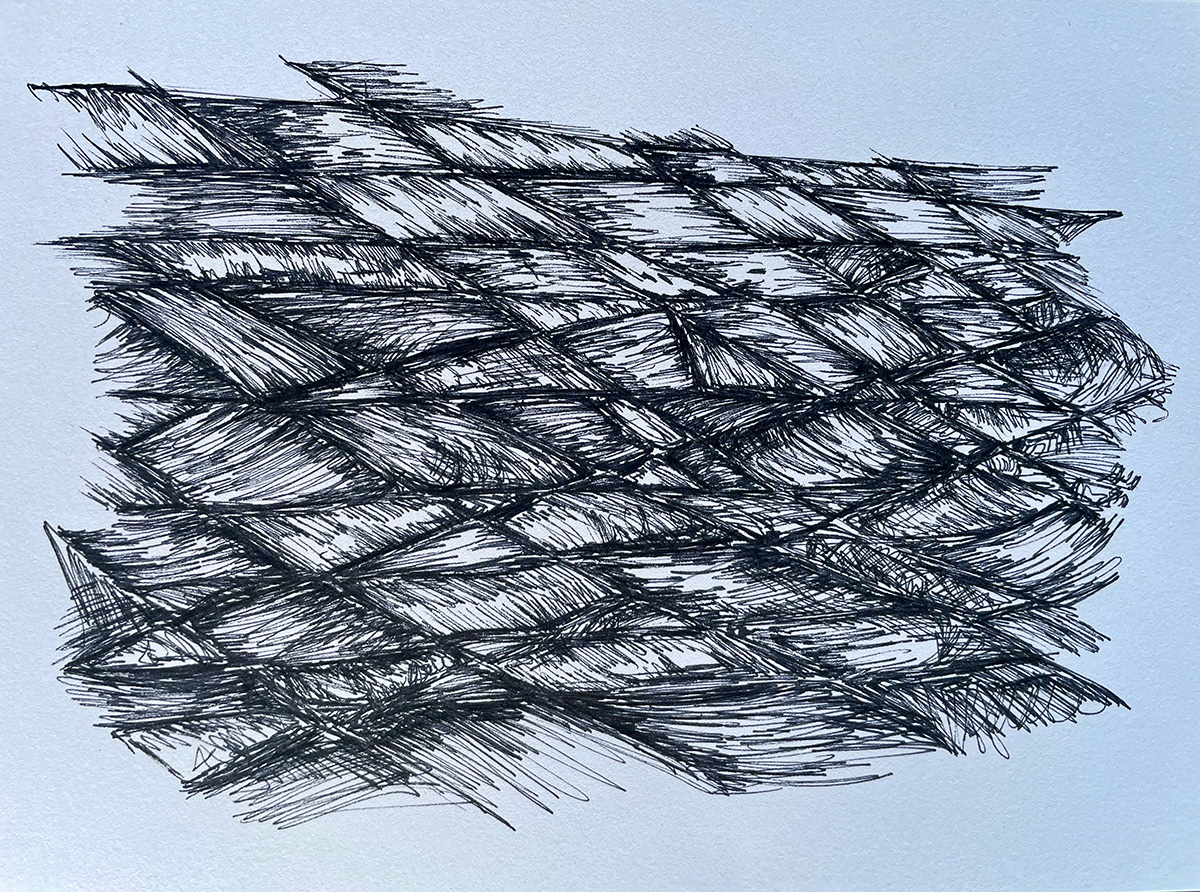
Black ink on textured sketch paper.
14.8cm x 21cm
This sketch represents the interwoven connectedness between the research topic of vicarious trauma prevention, the profession of art therapy, the complexity of working with trauma and the researcher.

Black ink and alcohol felt tip.
29.7cm x 42cm
By cutting through the fibres and exposing the inner reasoning of an art therapy student’s research into preventative vicarious trauma strategies, one may discover beneficence and self-preservation as reasoning.
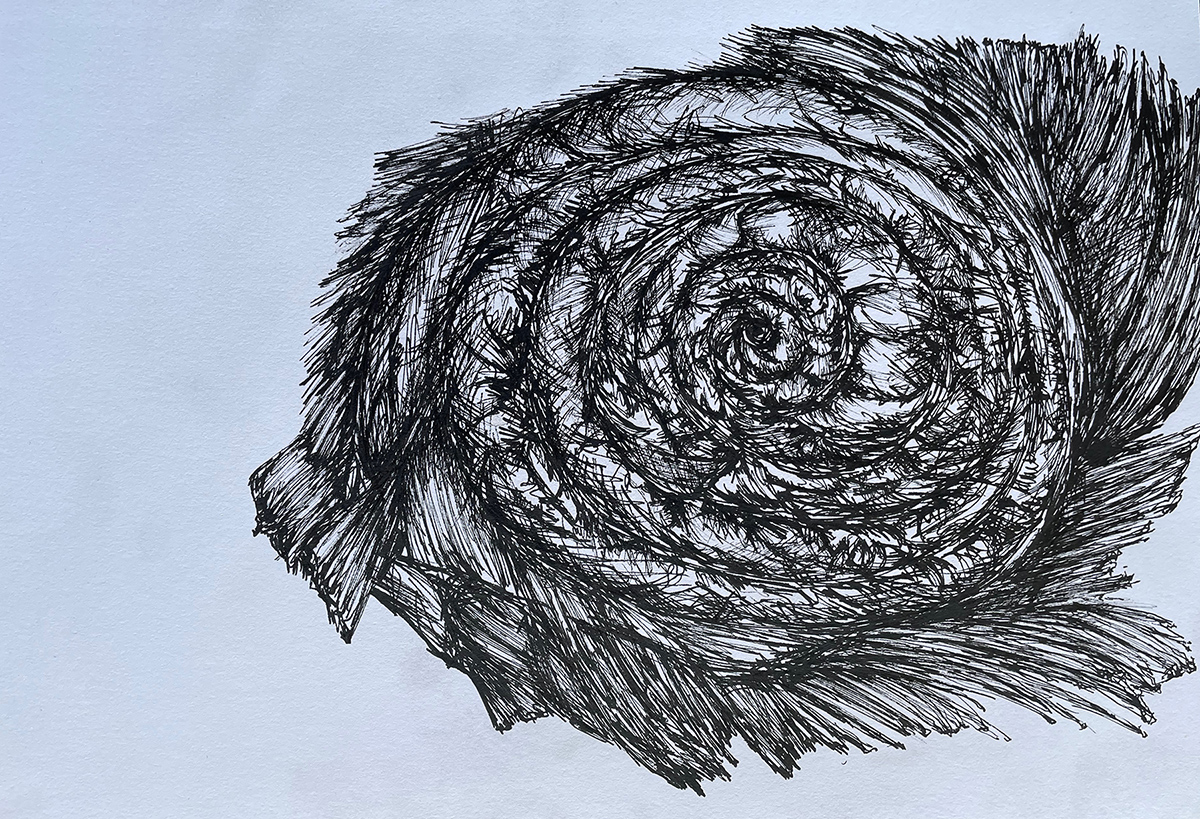
Black ink on textured sketch paper.
29.7cm x 42cm
Tightness in the chest, fast pulse, and adherence to deadlines. The thesis journey is not a simple one. The unconscious becomes an art piece using surrealist automatism.
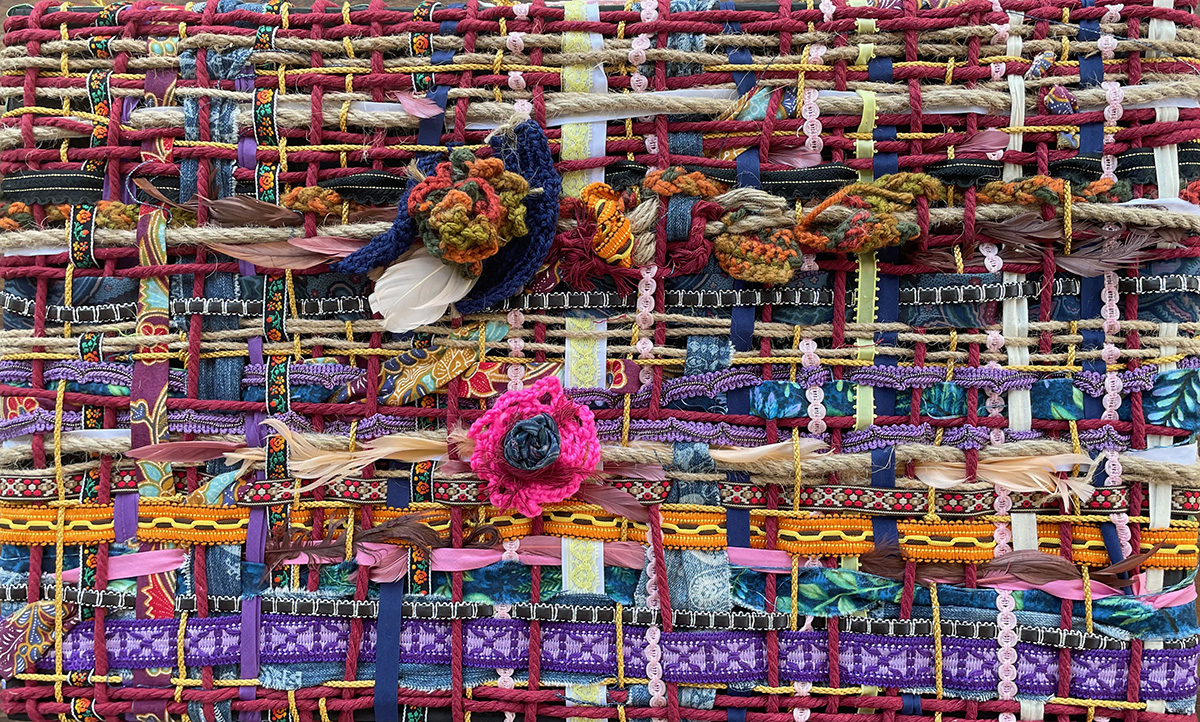
Weaving board created from recycled cardboard, cotton and synthetic textiles and feathers.
63cm x 40cm
The structured, repetitive nature of a scoping review, is not the most natural form of activity for a creative mind. Therefore, the explosion of creativity needed to be expelled by the researcher by more tactile and colourful means.
